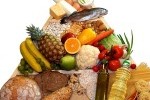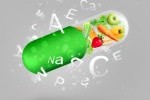Some of us are consuming cow milk at least once daily with breakfast cereal, then cheese with our burger for lunch and cheese-cake or yogurt or even ice-cream for a snack or desert. But have you ever questioned of where and when we started consuming cow’s milk and for how long adult-humans have been consuming milk?
Archeologists assign the beginning of dairy use as early as 7,000 years ago among the central Europès and West African first farmers. The evidence is derived from three main sources. The first, finding bones of young calves that were slaughtered before their first birthday suggesting that cattle were raised primarily for dairy and why the calves were killed. Second, recently isotopic analysis of pottery residues became available for identifying dairy fats that were left in the layers of pottery clay. Lastly, iconographic sources and other documentary materials such as drawings and cheese recipes are also evidenced as early as 3000 BC.
During the most recent ice age, milk was essentially a toxin for adults, because unlike children, adults don’t produce the lactase enzyme that breaks down milk sugar(lactose) to be absorbed. Which is also called lactose intolerance. Milk could be food only for infants. When babies are born they don’t have lactase enzymes either, until the mother’s first milk is introduced to them with a small amount of enzyme that helps to break down the milk. Mother’s milk then can be produced in a larger amount when the baby’s digestive system is ready to break down larger amounts of lactose and be absorbed. During that time, the baby is able to produce small amounts of their own enzyme. But, as the baby grows,(about 2 years of age) the enzyme in the digestive tract decreases. By that time, mothers can identify that the baby may have some problems with digestion, such as diarrhea. This is thought to be the moment when pre-historic mothers began weaning their babies off milk.
Scientists suggest that adults were not always able to digest milk. In fact, the ability to digest milk came to us later by mutation of one of our LP allele in the DNA. This gene appears to be “among the strongest yet seen for any gene in the genome”. Compounded over several hundred generations it is slowly taking over the continent. Mutations of the allele started with those who had a better supply of fresh milk and dairy. Most cultures experienced some weather difficulties, which either helped them to increase their milk consumption or completely reduced milk consumption to none. For example, the North areas were found to use more dairy such as cheese, milk and yogurt, where as the Southern areas consumed very little dairy and most of it was used only as yogurts, where there is no need for lactase to digest. The Mediterranean areas were found to consume lower amounts of butter and cream historically, which is thought to be due to the discovery of olive oil. These differences in milk consumption help explain why the development of the new allele was not simultaneous and took several hundreds of generations and movements of population from one area to another for people to be able to digest milk.
Even though not all cultures could digest milk, those that did not consume live-stock milk, fed it to their children, and used milk for religious traditions and as a gift to God. There are several famous myths in Egyptian history that were documented: one, a gigantic Ninhursag (or Nintu) mother cow that fed human children with colostrum milk. Another interesting mythical cow, Hathor, provided a child with milk that helped a young prince to become a king.
In order to be milk tolerant, you need to have only one allele of the two given from your parents. But surprisingly even with this little requirement, we still are in the process of mutating our DNA towards milk tolerance. It was estimated that only 35% of the population of the entire World are milk tolerant today. So, milk tolerance is apparently not that common, are you milk tolerant or intolerant? Common symptoms of lactose intolerance include: bloating, gas, intestinal cramps and diarrhea and possibly even allergy symptoms due to gut flora imbalances and toxic putrefaction which might even lead to a variety of other symptoms and conditions.
There is good news for those that are lactose intolerant and wish to consume dairy products. There are several options. You can buy lactose free milk which is milk that has added lactase, or you can buy lactase enzyme and add it to your regular milk or take an enzyme supplement with your dairy meals. Also, cultured milk products like yogurt contain live organisms that pre-digest the milk sugars(lactose) and proteins some.
References:
1. The Milk Revolution.
2. Cows, milk and religion: the use of dairy produce in early societies(new).







